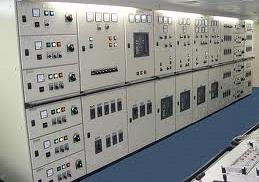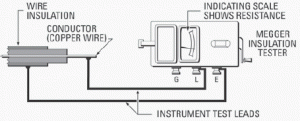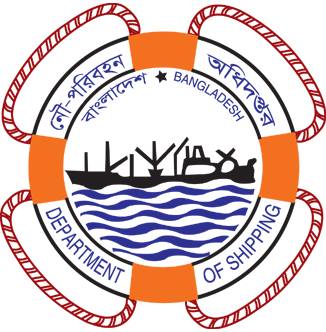Watch Keeping in Engine Room:

Image Credit: www.jamstec.go.jp
A. Handing over a watch:
Engineers on ships perform their duties in rotational shifts, each having fixed and equal number of hours. This work shift, also known as a watch, needs to be carried out in an efficient manner to ensure the safety of life and property at sea. The normal watch keeping schedule and responsible watch keeping engineers in a fully manned engine room:
0800-1200——4/E, 2000-2400—-4/E
1200-1600——3/E, 2400-0400—-3/E
1600-2000——2/E, 0400-0800—-2/E
- A watch keeping engineer should take extra care while handing over the watch to the incoming watch keeping engineer to make sure that the ship runs safely and smoothly.
- It is necessary that the right information is passed to the incoming engineer by the engineer on watch so that he can concentrate on his watch and perform more demanding and important jobs.
- Handing over of the watch should be carried out according to the instructions provided by the chief engineer’s standing orders and company’s instructional manual. It should be done very sincerely and honestly so that the watch keeping becomes smoother and continuation of any kind of work is not affected on the ship.
- The following things need to be informed to the reliving officer:
- Special orders related to any ship operation from bridge or the company
- Standing orders from the chief engineer
- Special mode of navigational operation of ship in case of emergency situation, damage, icy, or shallow water etc
- In case there is any kind of maintenance work being carried out in the engine room by other engineers and crew members then their work location, details of machinery under maintenance, and information of authorized person and crew members should be provided.
- Any potential hazard because of the ongoing maintenance work should also be informed.
- In case there is any equipment failure, details of the same should be informed
- All the checks already made when the ship leaves the port should be noted. In case any check is pending, it should be conveyed to the incoming watch keeping engineer
- All the checks that are made when the ship enters the port should be noted and informed in case any is missing.
- Condition and important information regarding mode of operation of main engine, boiler, and auxiliary engines should be informed
- Level of important tanks such as bilges, ballast tank, sewage tank, reserve tank, slop tank, fuel tank, or any other tank which requires attention
- Condition and state of fire extinguishing equipment and systems, in case any specific section or fire alarm has been isolated
- In case an equipment needs to be monitored manually, details of the same should be provided, along with the condition of monitoring and control equipment
- Any form of adverse ship condition needs to be informed
- Information on the condition and modes of all the important auxiliary machinery such as purifiers, fresh water generator, oily water separator, pumps, sewage treatment plant, should be provided
- Stand by machinery are at Standby mode and emergency equipments are at ready mode.
- If any machinery runs in manual mode for special precaution need to be informed (for example F.O. Transfer pump or boiler feed pump etc)
- In case any important machinery failed to receive attention during the watch, the reliving officer should be reported and asked to take care of the same
- The condition and modes of automatic boiler controls and details of other equipment related to the operation of the steam boiler should be provided
- The engineer officer should ensure that all the important parameters regarding main and auxiliary machines are suitably recorded in the engine room log book.
- Main and Auxiliary machineries, boiler, A/C, refrigeration, steering, electrical motors, alternators etc. in good order or any changes from normal, abnormality to be informed.
- Status of communication with bridge to be informed.
- Environmental protection in good order e.g. smoke etc is in acceptable level and ppm & alarm of OWS if it is running
- M/E rpm/ ship speed status
- Log Book updated in time, all parameters logged down, meter readings recorded as appropriate
- For and UMS ship alarm record book and equipment check lists to be verified
- If you are satisfied that the incoming watch keeping engineer is in fit/good condition; not drunk etc. and mentally and physically prepare to take over the watch then hand over the watch to him by signing company form.
- if in doubt, inform and consult with the chief engineer officer.
B. Taking over a watch
- For taking over a watch get ready with proper PPE at least 20 minutes before the watch. Then if not restricted area go outside the accommodation to see the M/E and Aux Engines exhaust gas colour from the funnel.
- Then Come down to the engine room in time, take a good round to feel for any abnormality in sound, smell etc.; check for any leak, contamination, level, pressures and temperatures of all running machineries:
- ME or propulsion systems functioning and all units’ exhaust temp, piston cooling lub oil outlet temp, JCW outlet temp, Lub inlet pressure & temp, Air Cooler temp, fuel temp & pressure to be checked.
- Aux Engine system functioning and all units’ exhaust temp, piston cooling lub oil outlet temp, JCW outlet temp, Lub inlet pressure & temp, Air Cooler temp, fuel temp & pressure to be checked.
- Steering system functioning and tank oil level to be checked.
- Boiler pressure and water level to be checked. Also check the hotwell water level.
- Accommodation A/C and provision refrigeration plants to be checked and provision rooms temp to be checked too.
- EGE/EGB inlet & outlet exh temp to be checked.
- Bilge level in all bilge wells and bilge holding tank to be checked.
- Sludge tanks and BSO tanks level to be checked.
- Purifier fuel temperature, pressure and gear oil level to be checked.
- Air Compressor runs in auto and air bottles pressure maintaining. Air Compressor oil level to be checked.
- Drain fuel oil settling and service tanks and check the level & temperature.
- Air Bottles to be drained and pressures to be maintained.
- If the incinerator runs, waste oil service tank level and temperature and incinerator furnace temperature to be monitored.
- Sewage treatment plants to be check for proper functioning
- Environmental protection in good order e.g. smoke etc is in acceptable level.
- Safety related items e.g. fire alarms and fire extinguishing system to be checked for proper functioning or any abnormality.
3. Then after coming back to the control room, check the control panel for any abnormal alarms or parameters.
4. Check the main electrical switch board for running D/G load, volt and amp and stand-by mode of other idle D/G. Also check the megger readings and lamp indications for earth faults in 440Volt or 220 Volt feeder panel.
5. Then check M/E rpm, T/C rpm and M/E load indicator and ask about C/E and bridge instruction for M/E rpm.
6. Ask the following information from relieving engineer before taking over the watch:
-
- Any special orders related to any ship operation from bridge
- control system or manual operation of any machinery in engine room & deck if any
- Standing orders from the chief engineer
- Special order from the company or master
- Level of important tanks such as bilges, ballast tank, sewage tank, or any other tank which requires attention
- Condition and state of fire extinguishing equipment and systems, in case any specific section or fire alarm has been isolated
- Special mode of navigational operation of ship in case of emergency situation, damage, icy, or shallow water etc
- Any ongoing maintenance jobs in E/R and any potential hazard associated with ongoing maintenance works.
- In case there is any equipment failure,
- In case any check is pending after full away or notice for arrival in port
- Any condition and important information regarding mode of operation of main engine, boiler, and auxiliary engines
- Any equipment is running on manual mode
- Any important machinery failed to receive attention during the watch,
7. Before taking over , the log book should be checked and ensured that all the important parameters regarding main and auxiliary machines has been recorded and updated in the engine room log book by outgoing watch keeping engineer and signed.
Accepting Watch
-
- If all above check points are covered satisfactorily, watch is taken over smoothly. If in doubt – may inform and consult with chief engineer
- Compilation of machinery space log book & understanding significance of readings taken
- In general while taking over/handing over a watch, considering a smooth running operation, all parameters – pressure, temperature, level, flow meter reading etc. are normal and logged down in the log book accordingly. Should there be any abnormality following significant difference will appear:
- Change in temperature and pressure will indicate deviation/abnormality, considering same ambient condition
- Different level condition indicates loss, leakage, overflow etc.
- A distillate plant flow meter small (red new) reading may indicate performance fall off.
- FO/DO flow meter increased reading may indicate loss of above, leakage etc.
- In brief any change in log book parameters will help to make out difference between condition monitoring and easily detects some fault with relevant machineries and indicate their performance.
C. Duties of a watch keeping engineer during an engine room watch:
During the engine room watch, the following machineries to be monitor regularly:
-
- ME or propulsion systems functioning and all units’ exhaust temp, piston cooling lub oil outlet temp, JCW outlet temp, Lub inlet pressure & temp, Air Cooler temp, fuel temp & pressure to be maintained.
- Aux Engine system functioning and all units’ exhaust temp, piston cooling lub oil outlet temp, JCW outlet temp, Lub inlet pressure & temp, Air Cooler temp, fuel temp & pressure to be maintained.
- Steering system functioning and tank oil level to be maintained. System to be greased or lubricate.
- Boiler pressure and water level maintaining.
- Accommodation A/C and provision refrigeration plants to be checked and provision rooms temp to be maintained.
- EGE/EGB soot to be blown.
- Bilge level to be checked and if necessary, bilge to be transferred in Bilge holding tank.
- Sludge tanks level to be checked and if required, sludge to be transferred in BSO tank.
- Purifier fuel temperature, pressure and de-sludging in time.
- Air Compressor runs in auto and air bottles pressure maintaining
- Drain fuel oil settling and service tanks and maintain proper level and temperature.
- Air Bottles to be drained and pressures to be maintained.
- If the incinerator runs, waste oil service tank level and temperature and incinerator furnace temperature to be monitored.
- Sewage treatment plants to be check for proper functioning
- Environmental protection in good order e.g. smoke etc is in acceptable level.
- M/E rpm to be maintained according to C/E instructions.
- Safety related items e.g. fire alarms and fire extinguishing system to be checked for proper functioning.
- Additionally check for any bad smell, abnormal sound, and look for any abnormality, leakage, level etc.
- In fact a good watch keeping helps keep aware of any changes and decision can be made out accordingly.
- Bridge/chief engineers any instruction should be completed with
- Any pending repairs, bilge, ballast operations to be supervised carefully.
- During any congested water navigation, bad weather, appropriate decision should be taken. For any kind of problems with main/auxiliary machines, bridge/chief engineer officer to be informed as appropriate, meanwhile preventive/corrective action to be taken.
- Safety precautions to be observed during a watch and immediate actions in the event of a fire or accident by informing bridge and chief engineer.
What precautions to be observed during a watch?
- Regular rounds to observe for bad smell, abnormal sound/noise,leakage,level etc.
- Main, auxiliary machinery, steering gear etc. pressure temperature, level maintained normal, main engine RPM, vessel speed normal
- Boiler, pressure, level, A/C, refrigeration, pumps etc in order
- Exhaust/smoke checked clear, bilge level, normal, fire duties, active
- No undue bilge level, ballast, transfer operation taking place.
- Take corrective actions to change in parameters and inform chief engineer/bridge when appropriate.
What immediate action you are going to take in the event of a fire or accident?
Ans: The Abbreviation of Fire:
F – Find or Find
I – Inform Isolate
R – Restrict Report
E – Extinguish Extinguish
Hence on viewing a fire isolate the source of combustion and inform the bridge and Chief Engineer, raise fire alarm, so that others will remain aware of the situation, will muster & come to help.
Meanwhile try to extinguish the fire with appropriate means.
Should there be any accident inside E/R, inform bridge, Chief Engineer and raise emergency alarm so that other crew members will muster and come to help/rescue as appropriate. Meanwhile take corrective actions as deemed necessary.
























